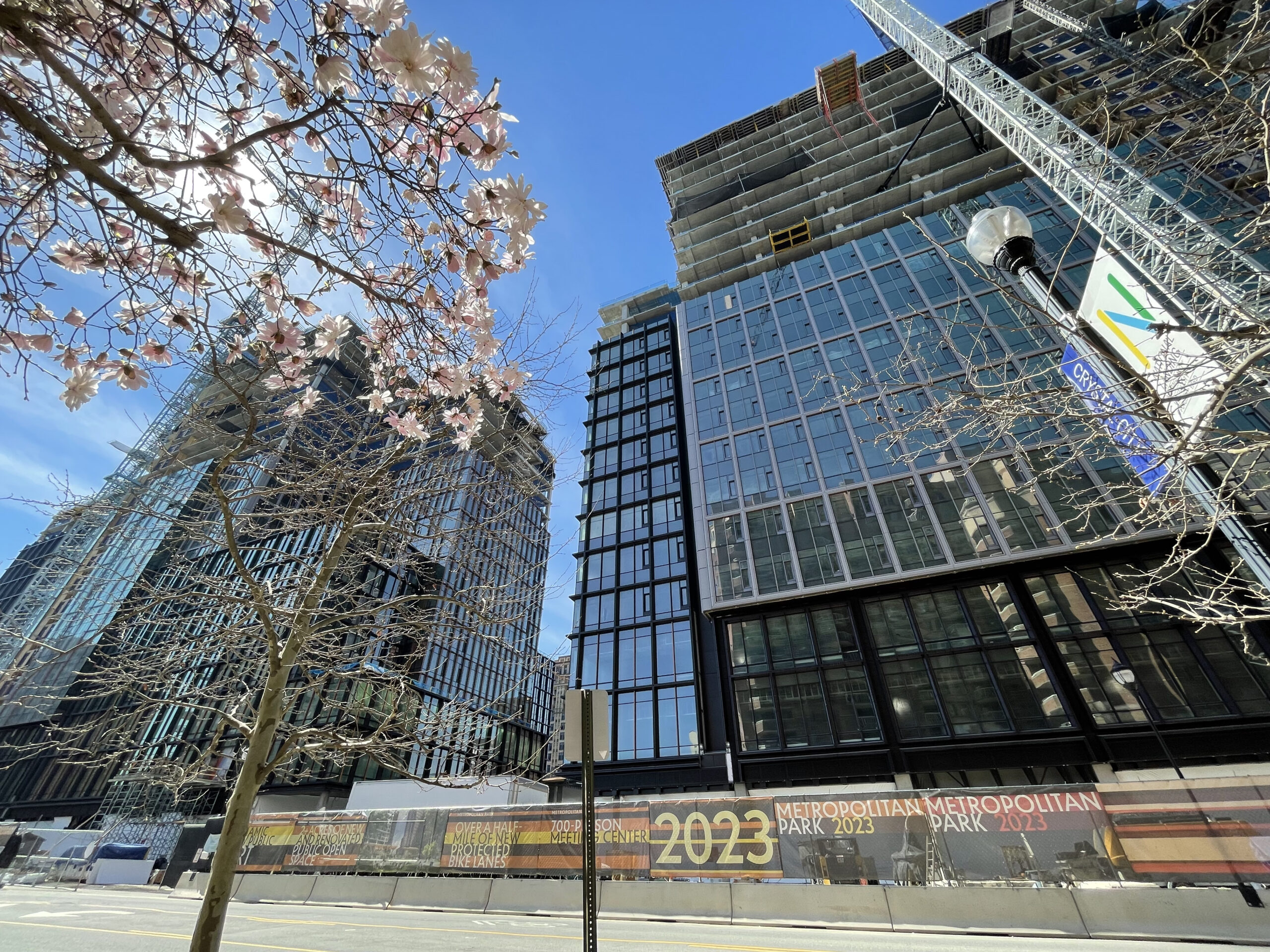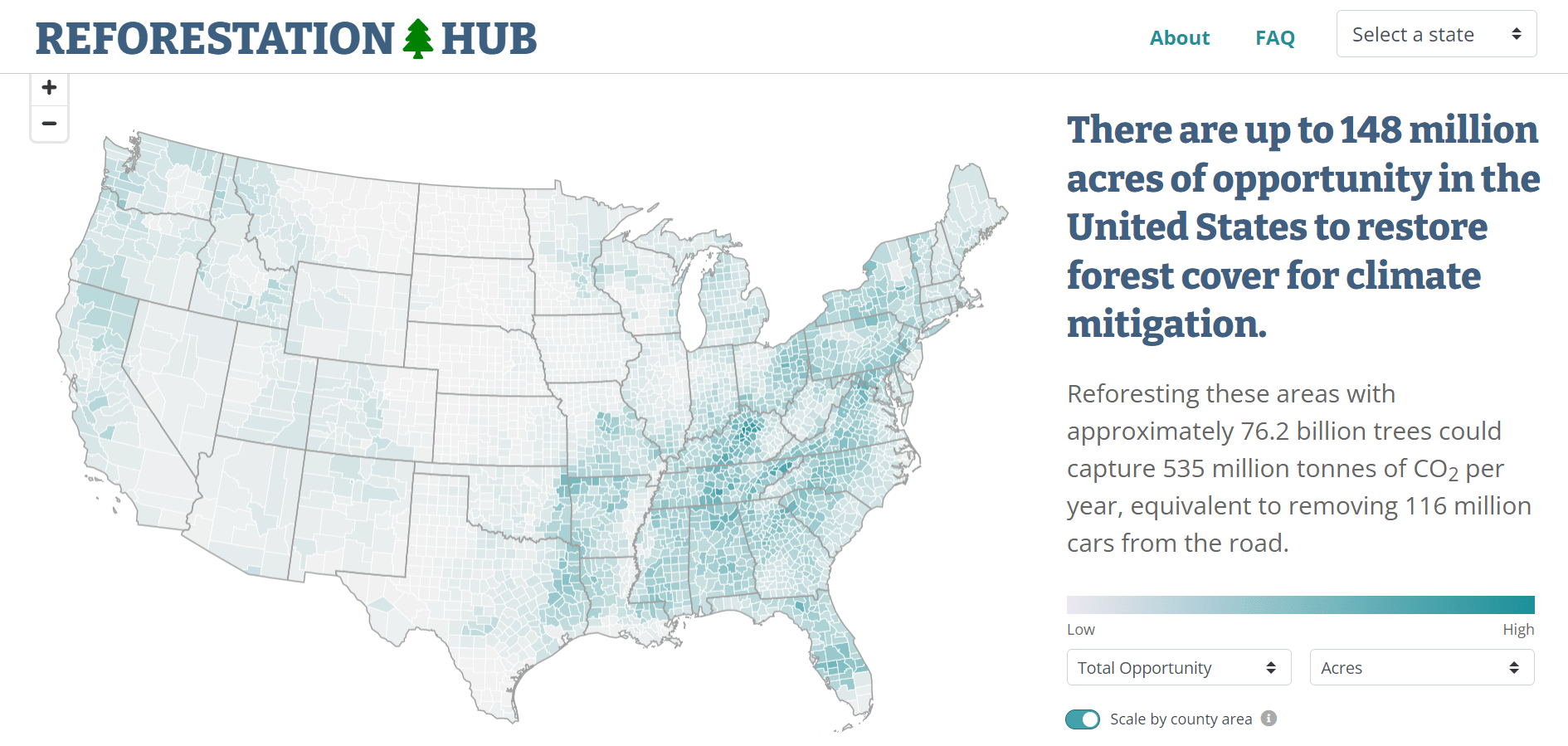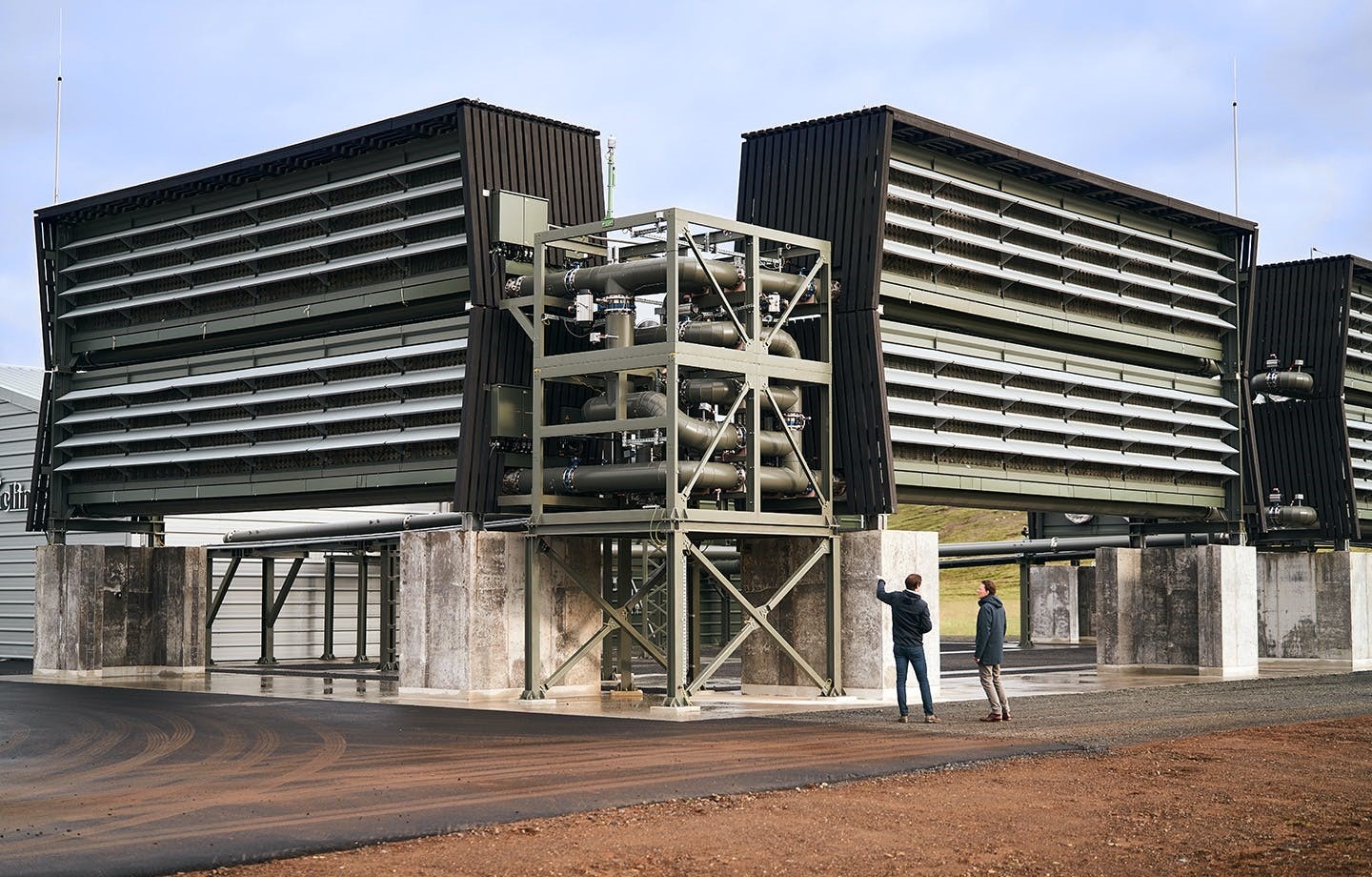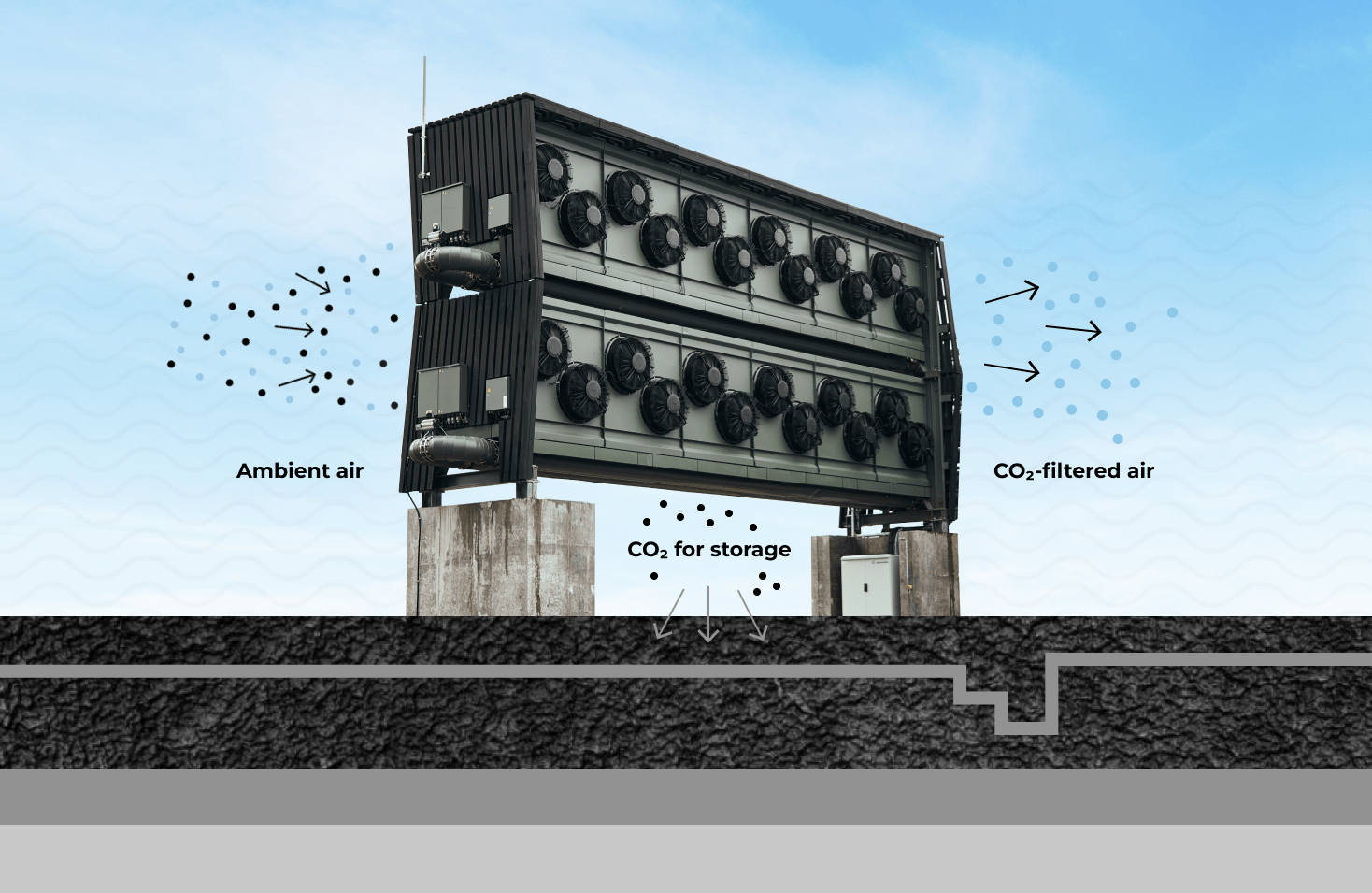We have much more to do and your continued support is needed now more than ever.
Five Things to Know About Carbon Dioxide Removal

1. What is carbon dioxide removal and how does it work? How is it different from carbon capture?
Carbon dioxide removal (CDR) is a strategy where carbon dioxide (CO2) is removed directly from the ambient air using either nature-based solutions, technological strategies, or a combination of the two. Examples of CDR include reforestation, native prairie restoration, enhanced weathering of rocks and mineralization of CO2 into new rocks, and direct air and ocean capture of CO2.
Whether using photosynthetic processes like those occurring in trees or other plants to absorb CO2 or chemical filters like those often found in direct air capture (DAC), the strategy draws down CO2 from the surrounding environment. This is different from carbon capture (CC) where technological equipment is retrofitted or built into to a facility to capture CO2 directly from an emitting source. This mitigation technique is useful in heavy industries that often emit CO2 as a part of their manufacturing processes, like steel or cement factories.
2. What are the benefits of carbon dioxide removal?
CDR can…
Address legacy emissions. Carbon dioxide emissions are naturally processed through the Earth’s carbon cycle, relying on natural carbon sinks like plants and the ocean for absorption. But as more CO2 has been produced through the industrialization of society, those sinks have become overwhelmed and that CO2 remains in the atmosphere and continues to build up with every ton of CO2 emitted from cars, planes, power plants, and industrial manufacturing. Those historic emissions in the atmosphere are often referred to as legacy emissions. CDR, while not preventing new emissions from occurring, removes those legacy emissions from the atmosphere to prevent further warming.
Have broad siting potential. Because CDR strategies do not rely on a single point source of emissions, and rather, draw CO2 down from the ambient air, they can be located anywhere as long as they can be supplied with the energy they require to function. Careful thought should go into where CDR is deployed so as to take into consideration environmental justice principles and to protect wildlife and ecosystems.
Allow for technological innovation and advancement. Most technological or hybrid CDR strategies are in the early stages of development. Federal initiatives, grants, and funds for research & development (R&D) can support the testing and commercial advancement of technologies that allow for integrating a variety of strategies to both come up with innovative ideas and improve upon the design and cost of technologies already available.
Advance global justice and equity. Despite not being largely responsible for the majority of CO2 emissions, the Global South suffers disproportionately severe ramifications of the climate crisis. At the same time, many of these developing nations are working to scale up and industrialize their societies in ways that often rely on fossil fuels because they are cheap and widely available. By employing CDR strategies, the Global North can take responsibility for its contribution to CO2 in the atmosphere, drawing down legacy emissions, while recognizing the development needs of other nations. The Global North, however, should also support self-determined climate solutions and related economic opportunity worldwide.
Contribute to multiple pathways for CO2 “reuse.” Since CO2 is collected directly from the air in the case of technological CDR, a pure stream of it can be separated and used in the manufacturing of building materials like cement, or can serve as a feedstock—in place of what is traditionally a fossil fuel input—to produce chemicals or low-carbon fuels. Read more on the innovative reuse of carbon dioxide in this issue brief under the “Utilization” section.

3. What are the challenges?
Right now, most CDR strategies…
Are in development and need to be scaled up. The innovative technology behind some CDR strategies has yet to be tested at-scale—meaning removing a million tons of CO2 annually. Certain processes like DAC are more advanced than others, and have been deployed at the level of 4,000 tons of CO2 absorbed per year. While the private sector is creating new opportunities and collaborations in CDR, the federal government has provided incentives to scale up CDR strategies by offering commercial and pre-commercial prizes, funding for R&D, and creating a program to develop DAC “hubs” where multiple DAC strategies can share infrastructure with the goal of each hub removing one million tons of CO2 per year.
Are expensive. Due to several factors including the technology type, energy supply, and scale—and without U.S. laws requiring companies to pay for emitting CO2—technological CDR strategies are often considered costly, which makes them less viable. There have been a variety of responses to this to bring down the cost curve, including investments from the private sector and federal tax credits to incentivize carbon removal.
Require large energy inputs. In order for CDR to truly focus on removal of CO2 resulting in a negative emissions scenario (where we have removed more emissions than we have emitted), the entire value chain of a project needs to be considered, including its energy source. This means that zero-carbon energy sources like renewable or nuclear energy need to be abundantly available. For energy-intensive pathways like DAC, location as well as the type of energy being supplied will be critical to achieving climate goals.
4. What is an example of CDR implementation?
Nature-based CDR
NWF has partnered with The Nature Conservancy (TNC) and American Forests to “help increase the pace, scale, and quality of restoration and reforestation on our national forests” both through direct action and public policy advocacy. In addition to the Plant a Billion Trees campaign, which seeks to plant one billion trees across the planet, TNC and American Forests have worked to create the Reforestation Hub, a tool that presents “relatively low-cost and feasible options to restore forest across the contiguous U.S.” An example of the Plant a Billion Trees initiative includes a goal to plant 600,000 trees in northeastern Minnesota including in the Superior National Forest. These efforts will contribute to forest resilience to climate change and sequestration of CO2, and can enhance ecosystem function.

Technological CDR
Climeworks, a Swiss-based DAC company, is one of the global leaders in DAC deployment. Their set up includes using large modular collectors that can be combined and scaled up. Air is drawn into the collector with a fan, passes through the chemical filter that attaches to the CO2, and exits on the other side. Once the filter is saturated with CO2, the collector closes and the filter heats up, which allows the CO2 to be separated. Their newest facility, Orca, was deployed in September of 2021 in Hellisheidi, Iceland, and is powered by geothermal energy. The Orca facility can remove up to 4,000 tons of CO2 from the air per year, and Climeworks has partnered with Icelandic company Carbfix to store the CO2 underground as solid rock. In June 2022 the company announced the groundbreaking of its second DAC and storage plant, which will also be located in Hellisheidi. This facility, Mammoth, will have the capacity to capture up to 36,000 tons of CO2 per year.
Learn more about NWF’s perspective on carbon management solutions and about the Department of Energy’s activities to fund new direct air capture hubs.


5. Why is NWF involved in the CDR space? What is the organization’s role?
As a conservation organization, supporting natural CDR strategies is already a part of NWF’s mission! Acknowledging that the climate crisis is broad-reaching and detrimental to both people and wildlife has shaped how our climate policy strategies have developed. Now that CDR is not just focused on natural solutions but also includes technological strategies and everything on the spectrum in between, NWF sees an important space in the conversation for environmental groups like ours to ensure that early, authentic, and meaningful community engagement and involvement is prioritized; local conservation efforts and natural and cultural resources are not negatively impacted by CDR deployment and infrastructure; CDR strategies are powered by zero-carbon energy sources; and the CO2 removed from the atmosphere is sequestered permanently in geologic storage or used in fossil-fuel-independent processes without the creation of fossil-fuel byproducts. NWF works to educate various groups of stakeholders from the general public to policymakers and industry while trying to amplify the voices of the conservation and environmental justice communities as the CDR sector takes shape.





















